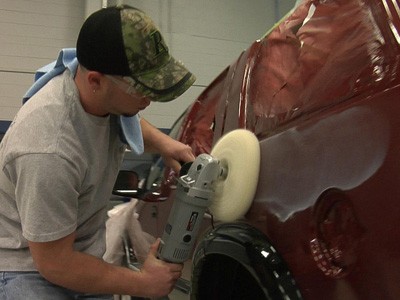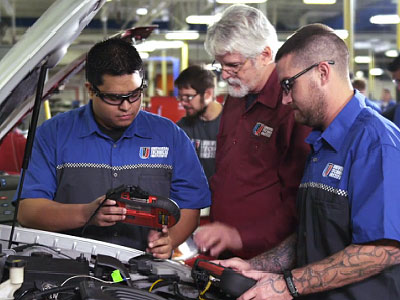Today kicks off Automotive Service Professionals Week, an industry observance that runs June 9-15, according to the National Institute for Automotive Service Excellence (ASE).
In light of last week’s monthly report on U.S. car sales – which in May reflected a sales pace not seen since before the recession, after nearly a decade of consumers clinging to their vehicles for record lengths of time — it got me to wondering about the outlook for repair shops and careers in automotive service.
Too, it’s a topic audiences might like to hear more about as angst grows about the cost/benefit calculation regarding four-year college degrees, even as another crop of high school grads wonders how to equip itself for the world of work. I always think vocational training is overlooked by business and personal finance writers, so here’s an opportunity to visit that realm as well as the small-business arena of auto mechanics, collision shops and related lines of business.
According to the market research firm IBISWorld’s February 2014 report on the auto mechanics industry (available to journalists on request to IBISWorld’s media relations staff), some 86,000 business establishments in the U.S. fall under the automotive service category, generating nearly $60 billion a year in revenue and while more new cars on the road is expected to lessen demand for repairs, the industry is expected to grow slightly over the next five years – and profit margins, which also dipped in 2009, are expected to climb back to nearly 5 percent.
Here’s an LA Times article about the car repair business and the economy; while it is from 2011 and reflects the flip side of what we are seeing now, it’s worth a read to see how the writer has woven in some interesting detail and factoids.

The Bureau of Labor Statistics predicts average growth for auto mechanics jobs, with media pay of about $17 an hour. You can find automotive service technology programs at most community colleges; a fact box on training and licensure requirements would be quite helpful to readers, as well as caveats in applying to for-profit tech schools. And here’s an interesting piece from Automotive News, “Sputtering auto education leads to skills breakdown,” that suggests a lot of questions for service shops and dealers, automotive training programs and state regulators about the perceived disconnect between licensing requirements and what’s under the hood of today’s cars.
On both the business and career front, check with your region’s chapters of the national trade associations, including the Automotive Service Association, the Automotive Maintenance and Repair Association and the Automotive Service Council.
You can look for specialty shops – eco-friendly mechanics like the Green Drop Garage in Portland, Ore., truck and fleet repair, women-owned, and so on. I did a report several years ago about overnight shops that attempt to accommodate working folks by fixing their cars while they sleep; they are few and far between but looking for shops that take service up a few notches might make for a good small biz marketing feature.
Another tip:
Talk with mechanics about what they hear from customers. Several winters ago, the shop that fixes my car told me they were getting a noticeable influx of patrons wanting the bare minimum done to their car so it could make a trip to Texas or other points south – a one-way trip by people out of work and fed up with the local economy. Other chitchats have disclosed interesting information on what repairs people skimp on and what brings them into the shop; these little tidbits from people on the front lines of consumer spending decisions can make for interesting local economic indicators.











